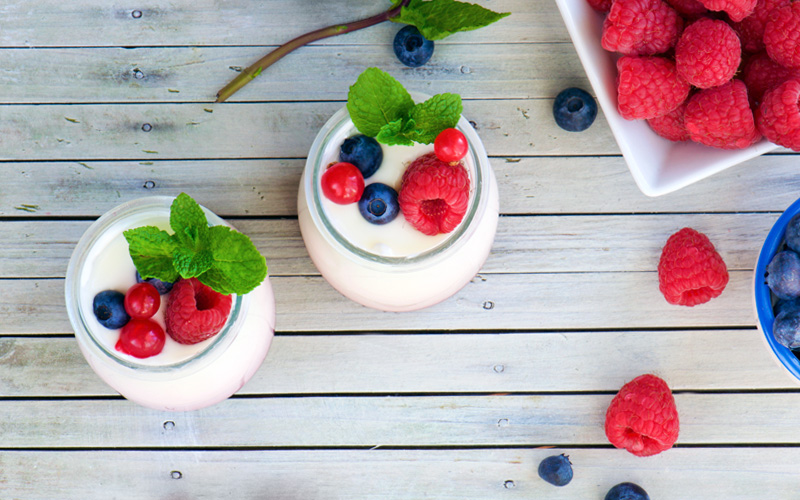
by guest blogger Peggy Kotsopoulos, registered holistic nutritionist, culinary consultant, member of Team Vega, and author of Kitchen Cures: Revolutionize Your Health with Foods that Heal
2015 is just about in full swing! What will the year bring us? No one knows for sure, but here are my five flavor forecasts for the upcoming year:
1. A new wave of exotic waters. Move over, coconut water…you’re in for some stiff competition with all the other exotic waters hitting the marketplace! Everything from maple water to watermelon water, aloe water to birch water, cactus water to barley water, and even artichoke water! With proper hydration being a top health priority and good ole traditional, plain water being too boring for some, we will have more picks of naturally flavored waters with additional health benefits. Just check the ingredients to make sure yours doesn’t contain added sugar!
2. All things fermented. Gut health and probiotics have been healthy trends in recent years. And rightly so, since roughly 70 percent of our immune system resides in our gut. While it’s good to take a probiotic supplement every day, fermented foods contain naturally occurring probiotics that aid in digestion and gut health—the Japanese have it right by drinking miso soup before a meal. Fermented foods, such as miso, kimchi, kefir, kombucha, tempeh, raw sauerkraut, and even yogurts made out of almond and coconut milk are becoming increasingly popular ways to boost gut health.
3. Whole foods. I’m not exactly talking the variety of whole foods (such as apples and spinach) you find when you walk into your grocery store ready to be eaten or prepared on their own (although these are, of course, fantastic for you). But rather, whole food ingredients found in things like supplements and bars. As consumers become more educated about what they are putting in their bodies and full transparency is required on nutrition labels, companies are starting to use whole food ingredients—instead of fillers and supplements—to make up their vitamin and mineral requirements. For example, the vitamin and mineral blend in new Vega One is made from whole fruits and vegetables like spinach, broccoli, tomatoes, apples, beets, and carrots. It’s not just the vitamin and mineral blend that’s made from real foods; every ingredient is made from whole food ingredients! Ingredients you’d choose to put in your smoothie yourself if you had the time.
4. Non-GMO verification. Increased disclosure and education in the food scene has upped the ante for food manufacturers to become non-GMO certified. GMOs, or genetically modified organisms, are species genetically engineered through artificial procedures that crossbreed and/or manipulate genetic makeup. There’s still a lot of research to be done on their long-term health effects, and many countries require GMO labeling on foods. Since there is no federal law that enforces labeling of GMO-containing foods in the United States or Canada, many manufactures are taking it upon themselves to get non-GMO verified by the Non-GMO Project, a third-party organization that ensures the foods and ingredients used are not GMO so consumers can make an informed choice. Look for the Non-GMO Project label, since this organization is the industry standard for third-party verification.
5. Ancient grains (not just quinoa!). While, for the past few years, we’ve had our run with quinoa, other ancient grains, including teff and kaniwa, are stepping up to make their mark. Both of these grains are gluten-free and high in protein, contributing to their popularity. Teff originated in East Africa and is a teeny-tiny little grain (similar in size to poppy seeds), making it easy to cook and use as an ingredient. Pasta manufacturers are now creating teff pasta as a gluten-free and high-protein alternative. In addition, teff is super high in calcium; in fact it’s one of the highest grain sources. Kaniwa is a close relative to quinoa, is also from South America, and is just a smaller, deep-red version. It exhibits a very similar nutritional profile to quinoa and is becoming increasingly popular for use in soups, salads, and side dishes and as a breakfast cereal.
What healthy foods do YOU think will be hot in 2015?
 Peggy Kotsopoulos is a registered holistic nutritionist (RHN) and culinary consultant focused on teaching real health through lifestyle and dietary choices that are easy and delicious. She obtained her RHN designation from the Canadian School of Natural Nutrition, completed her health educator certification from Hippocrates Health Institute, and graduated from Living Light Culinary Arts Institute. Peggy founded beVibrant—a food-based wellness consultancy. For more information, visit peggyk.com and follow Peggy K. on Twitter @BeVibranthHealth and on Google+.
Peggy Kotsopoulos is a registered holistic nutritionist (RHN) and culinary consultant focused on teaching real health through lifestyle and dietary choices that are easy and delicious. She obtained her RHN designation from the Canadian School of Natural Nutrition, completed her health educator certification from Hippocrates Health Institute, and graduated from Living Light Culinary Arts Institute. Peggy founded beVibrant—a food-based wellness consultancy. For more information, visit peggyk.com and follow Peggy K. on Twitter @BeVibranthHealth and on Google+.




No comments yet.